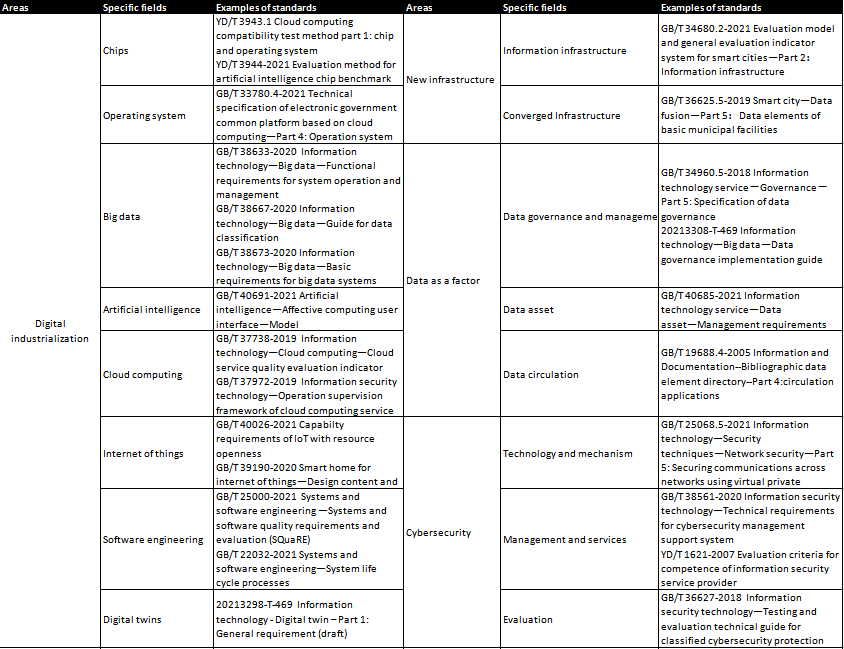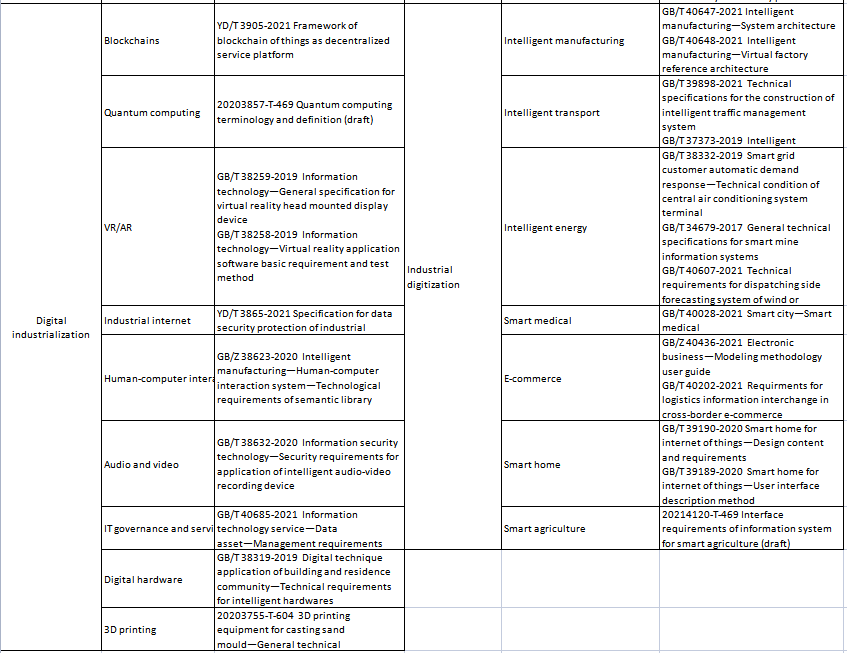On 24 October 2022, experts from the China Electronics Standardization Institute released an article elaborating on their research findings on Standardisation and Digital Economy Development in the Post-pandemic Era (hereinafter referred to as the Article). Specifically, the Article elaborates in detail the implications and characteristics of the digital economy in the post-pandemic era, as well as the role of standardisation in developing the digital economy, the barriers for digital transformation, as well as the standardisation needs and directions.
According to the Annual Report on Standardization Development in China (2020) released by the State Administration for Market Regulation, in 2020, 28 national standards, more than 80 local standards, and 269 association standards for epidemic prevention and control and the resumption of work and production were formulated and published; 40 international standards project proposals in related fields were also submitted to ISO and IEC. These numbers highlight the significant role that standardisation has played in supporting pandemic control efforts.
When it comes to the post-pandemic era, standardisation is expected to play a key role in supplementing laws and regulations, thus providing harmonised and updated guidance for the development of the digital sector as well as for industrial digitization, data governance and cybersecurity. Indeed, the standardisation of the digital economy promotes the application of corresponding technology, which in turn spurs the digital industrialization and development. Standards include, but are not limited to, new infrastructure standards, industrial Internet standards, cloud computing standards, etc. On the other hand, the standardisation responds the demands from digital transformation of traditional industries in terms of digital process reengineering, digital management, data sharing, intelligent manufacturing, etc.
Currently, the digital economy still faces great challenges, including prominent issues in digital transformation of individual enterprises, isolation and fragmentation of data resources, and the insufficiency of traditional digital governance model via laws and regulations. Focusing on those challenges, standardisation is thus expected to provide guidance for the transformation, facilitate data circulation, and meet the urgent demands emerging from constant updates and rapid development of the digital economy. Specifically, the Article outlines five directions in which standardisation will be prioritized: new infrastructure, industrialization of the digital sector, industrial digitization, data as a factor, and cybersecurity. For each area, there are both existing standards and ongoing standardisation projects (more details in the Annex below).
Annex: Directions, Subdivision and Standardisation Cases in Support of Digital Economy






